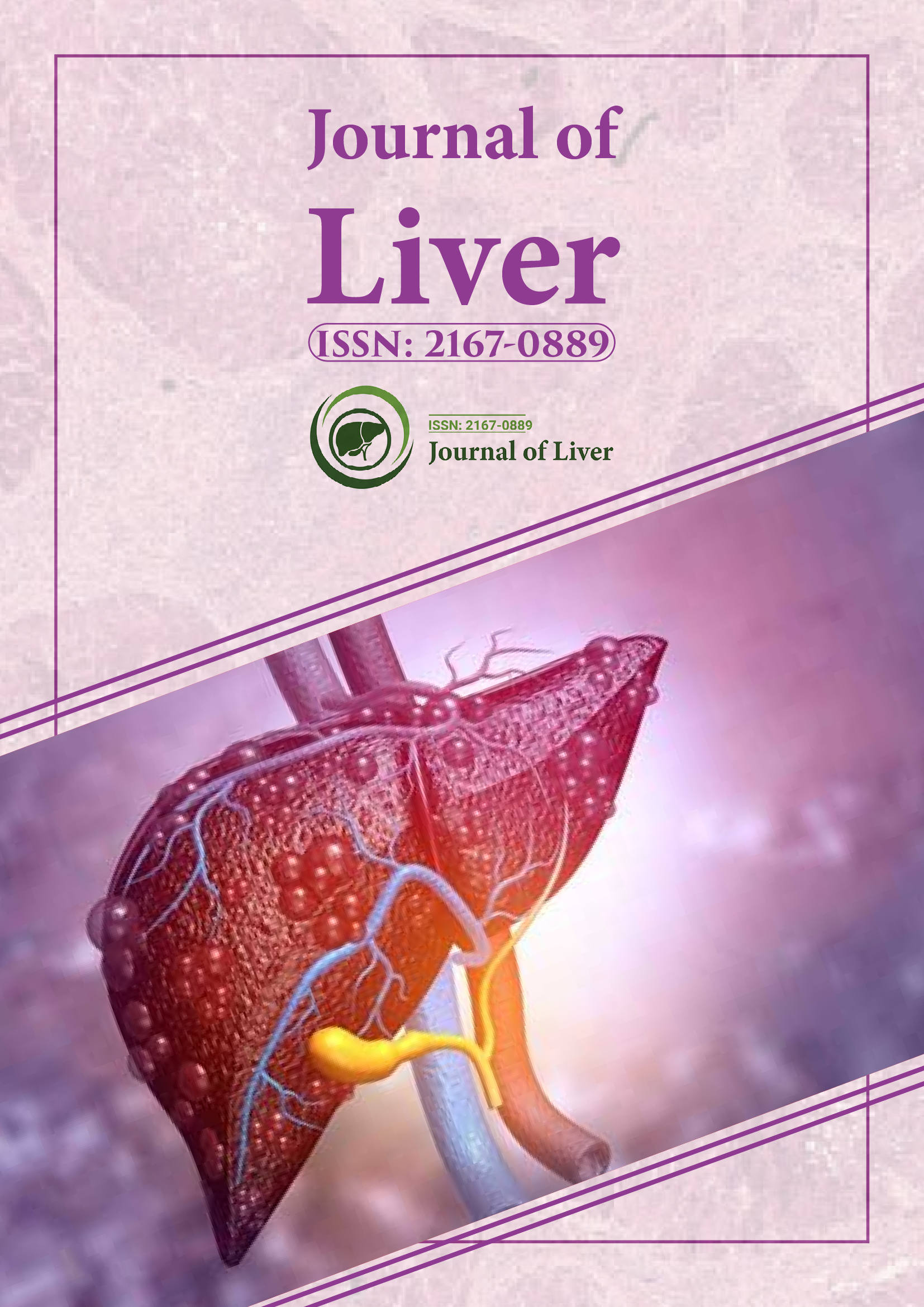Indexed In
- Open J Gate
- Genamics JournalSeek
- Academic Keys
- RefSeek
- Hamdard University
- EBSCO A-Z
- OCLC- WorldCat
- Publons
- Geneva Foundation for Medical Education and Research
- Google Scholar
Useful Links
Share This Page
Journal Flyer

Open Access Journals
- Agri and Aquaculture
- Biochemistry
- Bioinformatics & Systems Biology
- Business & Management
- Chemistry
- Clinical Sciences
- Engineering
- Food & Nutrition
- General Science
- Genetics & Molecular Biology
- Immunology & Microbiology
- Medical Sciences
- Neuroscience & Psychology
- Nursing & Health Care
- Pharmaceutical Sciences
Opinion Article - (2022) Volume 11, Issue 3
The Management of Impairment in Patients with Liver Cirrhosis
Asahi Haru*Received: 04-May-2022, Manuscript No. JLR-22-16929; Editor assigned: 06-May-2022, Pre QC No. JLR-22-16929(PQ); Reviewed: 20-May-2022, QC No. JLR-22-16929; Revised: 24-May-2022, Manuscript No. JLR-22-16929(R); Published: 06-Jun-2022, DOI: 10.35248/2329-6925.22.11.139
Description
Impairment is defined as "a biologic condition of reduced reserve and stress tolerance, arising from cumulative decreases across several physiologic systems, and leading vulnerability to unfavorable outcomes". Death is one of the negative effects. Impairment becomes more common as people get older, leading to serious consequences such as shortened lifespans, low quality of life, falls that increase the chance of disability, rehabilitation, and hospitalization. Impairment is a multifaceted, varied, and unstable phenomenon that cannot be explained solely in terms of disability or ageing. Impairment is sometimes referred to be the "opposite" of successful ageing. It's commonly thought as a state of fear.
Muscle wasting, malnutrition, and functional deterioration are all symptoms of cirrhosis. Frailty affects 17%-43% of patients with advanced hepatic cirrhosis. Liver illness in children can be caused by a variety of infections, as well as medicines or poisons. Impaired patients have higher MELD levels, lower sodium and albumin levels, and a higher rate of encephalopathy than nonimpaired patients. Patients that are impairment have a higher rate of comorbidities. In patients with liver cirrhosis, sarcopenia is a common muscle condition. Impairment can be regarded of as a sarcopenia-related condition. Impairment, on the other hand, is not the same as sarcopenia. This makes measuring Impairment using a specific set of signs and symptoms easier. In older people, sarcopenia and frailty are common. Impairment and reduced bone mass are linked to low protein consumption. The combination of sarcopenia and impairment has a negative impact on a person's ability to live freely. Sarcopenia is a disorder that causes undesirable changes in an individual's physical and metabolic processes, leading to morbidity and death. It is connected with the loss of skeletal muscle mass, strength, and function as they age.
Fatigue is linked to skeletal muscle loss, and weight loss in frailty leads to physical function impairment. As a result, we can argue that frailty and sarcopenia are related. Furthermore, osteoporosis might increase the incidence of frailty by double.
Sarcopenic obesity is caused by a drop in muscle mass and a decrease in physical activity caused by inflammation.
Sarcopenic obesity is typical in elderly obese people who have a lot of disease. Obesity in adults causes a decrease in muscle strength, which leads to a decline in physical functions and an earlier development of chronic disease. Sarcopenia develops in cirrhotic patients for a variety of reasons, the most common of which is an imbalance in protein turnover. Because of dietary, physiological, and metabolic problems, whole-body protein homoeostasis is disrupted in chronic liver disease. Though the exact mechanism of sarcopenia in cirrhosis is unknown, reduced levels of BCAAs, testosterone, growth hormone, or muscle autophagy, as well as hyperammonia, could all be contributing factors. Despite the fact that sarcopenia is unrelated to liver function, it can explain survival rates before and after liver transplantation. Poor quality of life and increasing health-care costs are also linked. Patients with cirrhosis have a 40%-70% likelihood of developing sarcopenia, and data suggests that cirrhosis patients with sarcopenia have a short life expectancy.
Polypharmacy is linked to chronic illness and co-morbidities, which raises the rate of hospitalizations, limits daily activities, causes cognitive impairment, and leads to death. Sarcopenia is made more likely by polypharmacy. It can lead to poor nutritional status, and malnutrition and drug-nutrient interactions are two key problems in elderly patients. Loop diuretics are used to treat ascites-induced edoema in liver cirrhotic patients. The best treatment for ascites is determined on the cause of fluid retention, and loop diuretics (20 mg) have been linked to accelerated muscle loss and sarcopenia.
Citation: Haru A (2022) The Management of Impairment in Patients with Liver Cirrhosis. J Liver. 11:139.
Copyright: © 2022 Haru A. This is an open-access article distributed under the terms of the Creative Commons Attribution License, which permits unrestricted use, distribution, and reproduction in any medium, provided the original author and source are credited.
